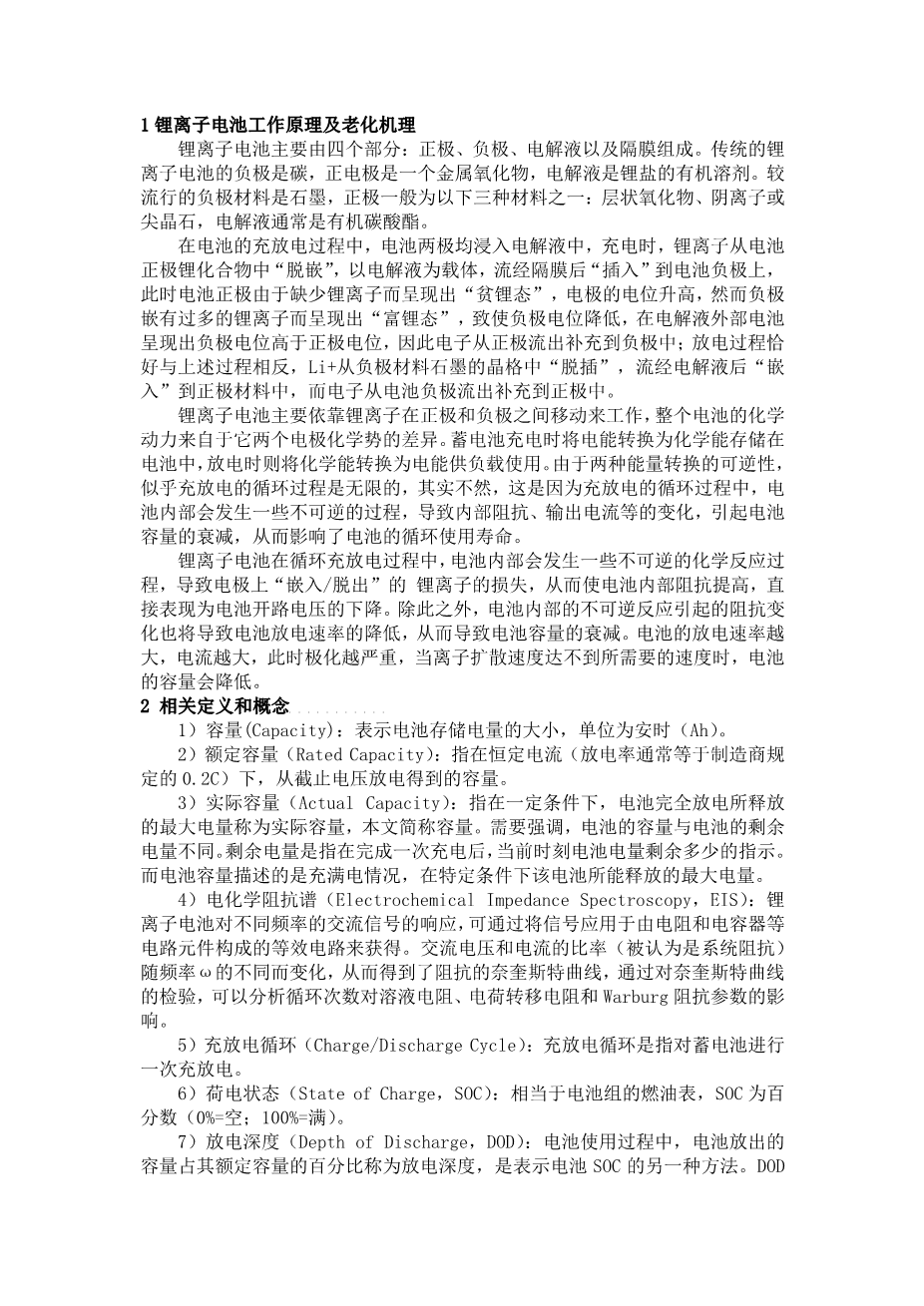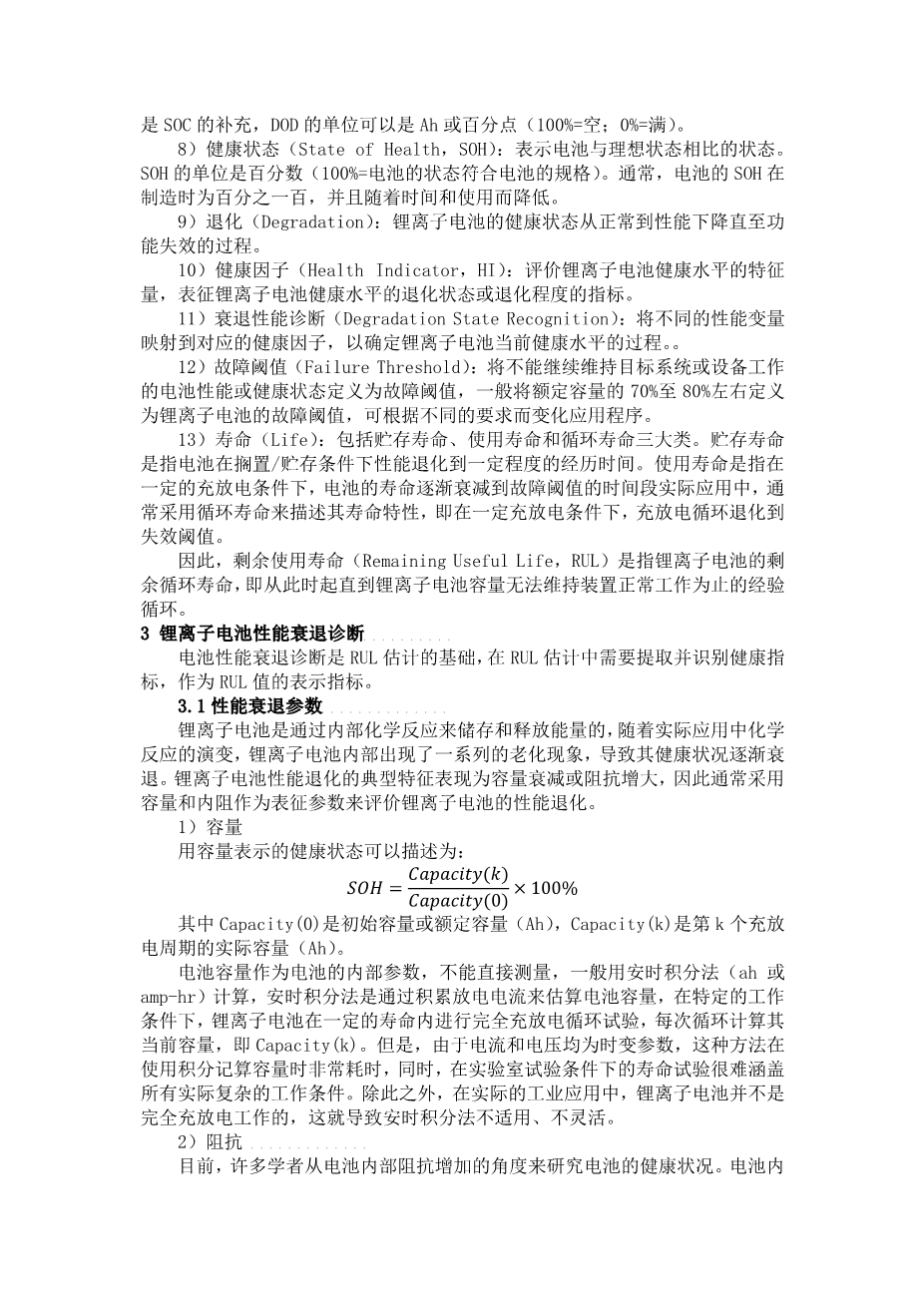1 Working principle and aging mechanism of lithium ion battery
Lithium ion battery is mainly composed of four parts: positive electrode, negative electrode, electrolyte and diaphragm. The negative electrode of traditional lithium-ion battery is carbon, the positive electrode is a metal oxide, and the electrolyte is the organic solvent of lithium salt. The most popular anode material is graphite. The anode is generally one of the following three materials: layered oxide, anion or spinel. The electrolyte is usually organic carbonate.
In the process of battery charging and discharging, the two poles of the battery are immersed in the electrolyte. When charging, the lithium ion is 'deblocking' from the lithium compound of the battery positive pole, taking the electrolyte as the carrier, flowing through the diaphragm and then 'inserting' into the battery negative pole. At this time, the battery positive pole is lack of Lithium ion shows a 'lithium poor state', the potential of the electrode increases, but the negative electrode is inlaid with too much lithium ion and presents a 'lithium rich state', resulting in a decrease in the potential of the negative electrode, and the negative potential of the battery outside the electrolyte is higher than the positive potential, so the electrons flow out of the positive electrode to supplement the negative electrode; the discharge process is just the opposite of the above process, Li from the lattice of the negative material graphite 'Unplugging' flows through the electrolyte and 'embeds' into the positive material, while electrons flow out of the negative electrode of the battery to supplement the positive electrode.
Lithium-ion battery mainly depends on the movement of lithium ion between the positive and negative electrodes. The chemical power of the whole battery comes from the difference of chemical potential between the two electrodes. The chemical power of the whole battery comes from the difference of chemical potential between the two electrodes. When the battery is charged, the electric energy is converted into chemical energy, which is stored in the battery. When the battery is discharged, the chemical energy is converted into electrical energy for the load to use. Because of the reversibility of the two kinds of energy conversion, it seems that the cycle process of charge and discharge is infinite, but in fact, it is not, because in the cycle process of charge and discharge, some irreversible processes will occur inside the battery, resulting in the changes of internal impedance, output current, etc., causing the attenuation of battery capacity, thus affecting the cycle service life of the battery.
In the process of cyclic charging and discharging, some irreversible chemical reactions will take place inside the lithium-ion battery, which will lead to the loss of 'embedded / detached' lithium-ion on the electrode, thus increasing the internal impedance of the battery, which is directly reflected in the decrease of the open circuit voltage of the battery. In addition, the change of the impedance caused by the irreversible reaction inside the battery will also lead to the decrease of the discharge rate of the battery, which will lead to the attenuation of the battery capacity. The larger the discharge rate and the current of the battery, the more serious the polarization is. When the ion diffusion speed can not reach the required speed, the capacity of the battery will be reduced.
2 Related definitions and concepts
1) Capacity: to indicate the capability of powerstorage and is measured in unit of amp-hour (Ah).
2) Rated capacity: to refer to the obtained capacity discharged to cut-off voltage at a constant current (discharged rate typically equals to 0.2C specified by the manufacturer).
3) Actual capacity: under certain conditions, the maximum amount of electricity released by the complete discharge of the battery is called the actual capacity. It should be emphasized that the capacity of the battery is different from the remaining capacity of the battery. Residual power refers to the indication of how much battery power is left at the current time after one charge. The battery capacity describes the full charge condition and the maximum amount of power that the battery can release under specific conditions.
4) Electrochemical Impedance Spectroscopy(EIS): is the response of a lithium-ion battery to AC signals of different frequencies,which can be obtained by applying the signals to a real electric circuit known as equivalent circuit constructed from cir-cuit elements such as resistors and capacitors.The ratio of AC voltage and current (regarded as the system impedance) changes with the different frequency omega;,as a result,the Nyquist curve of the im-pendence can be obtained. By checking the Nyquist curve,we may analyze the influence on parameters of solution resistance,charge-transfer resistance and Warburg impedance with the cycle number.
5) Charge/discharge cycle: a charge/discharge cycle means charging and discharging for one time to the storage battery.
6) State of charge (SOC): is the equivalent of a fuel gauge for the battery pack,and the SOC are percentage points (0% = empty; 100% = full).
7) Depth of discharge (DOD): In the process of using the battery, the discharge capacity of the battery as a percentage of its rated capacity is called the discharge depth,which is an alternate method to indicate a battery's SOC. The DOD is the complement of SOC,and the units for DOD can be Ah or percent points (100% = empty; 0% = full).
8) State of health (SOH): to indicate the condition of a battery compared to its ideal conditions. The units of SOH are percent points (100% = the battery's conditions match the battery's specifications). Typically,a batteryrsquo;s SOH will be 100% at the time of manufacture and will degrade over time and usa
剩余内容已隐藏,支付完成后下载完整资料


英语译文共 5 页,剩余内容已隐藏,支付完成后下载完整资料
资料编号:[236389],资料为PDF文档或Word文档,PDF文档可免费转换为Word
以上是毕业论文外文翻译,课题毕业论文、任务书、文献综述、开题报告、程序设计、图纸设计等资料可联系客服协助查找。


